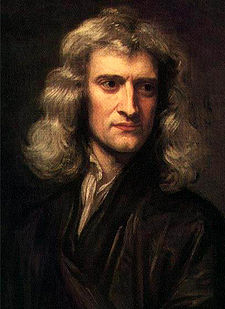Sample
Isaac Newton
President
“ Sir Isaac Newton was an English physicist, mathematician, astronomer, natural philosopher, alchemist, and theologian, and is considered by many scholars and members of the general public to be one of the most influential people in human history. ”
He also showed that the coloured light does not change its properties by separating out a coloured beam and shining it on various objects. Newton noted that regardless of whether it was reflected or scattered or transmitted, it stayed the same colour. Thus, he observed that colour is the result of objects interacting with already-coloured light rather than objects generating the colour themselves. This is known as Newton's theory of colour.
From this work, he concluded that the lens of any refracting telescope would suffer from the dispersion of light into colours (chromatic aberration). As a proof of the concept, he constructed a telescope using a mirror as the objective to bypass that problem. Building the design, the first known functional reflecting telescope, today known as a Newtonian telescope, involved solving the problem of a suitable mirror material and shaping technique. Newton ground his own mirrors out of a custom composition of highly reflective speculum metal, using Newton's rings to judge the quality of the optics for his telescopes. In late 1668 he was able to produce this first reflecting telescope. In 1671, the Royal Society asked for a demonstration of his reflecting telescope. Their interest encouraged him to publish his notes On Colour, which he later expanded into his Opticks. When Robert Hooke criticised some of Newton's ideas, Newton was so offended that he withdrew from public debate. Newton and Hooke had brief exchanges in 1679-80, when Hooke, appointed to manage the Royal Society's correspondence, opened up a correspondence intended to elicit contributions from Newton to Royal Society transactions, which had the effect of stimulating Newton to work out a proof that the elliptical form of planetary orbits would result from a centripetal force inversely proportional to the square of the radius vector (see Newton's law of universal gravitation - History and De motu corporum in gyrum). But the two men remained generally on poor terms until Hooke's death.
Newton argued that light is composed of particles or corpuscles, which were refracted by accelerating into a denser medium. He verged on soundlike waves to explain the repeated pattern of reflection and transmission by thin films (Opticks Bk.II, Props. 12), but still retained his theory of ‘fits’ that disposed corpuscles to be reflected or transmitted (Props.13). Later physicists instead favoured a purely wavelike explanation of light to account for the interference patterns, and the general phenomenon of diffraction. Today's quantum mechanics, photons and the idea of wave–particle duality bear only a minor resemblance to Newton's understanding of light.
In his Hypothesis of Light of 1675, Newton posited the existence of the ether to transmit forces between particles. The contact with the theosophist Henry More, revived his interest in alchemy. He replaced the ether with occult forces based on Hermetic ideas of attraction and repulsion between particles. John Maynard Keynes, who acquired many of Newton's writings on alchemy, stated that "Newton was not the first of the age of reason: He was the last of the magicians." Newton's interest in alchemy cannot be isolated from his contributions to science; however, he did apparently abandon his alchemical researches. (This was at a time when there was no clear distinction between alchemy and science.) Had he not relied on the occult idea of action at a distance, across a vacuum, he might not have developed his theory of gravity. (See also Isaac Newton's occult studies.)
In 1704, Newton published Opticks, in which he expounded his corpuscular theory of light. He considered light to be made up of extremely subtle corpuscles, that ordinary matter was made of grosser corpuscles and speculated that through a kind of alchemical transmutation "Are not gross Bodies and Light convertible into one another, ...and may not Bodies receive much of their Activity from the Particles of Light which enter their Composition?" Newton also constructed a primitive form of a frictional electrostatic generator, using a glass globe (Optics, 8th Query).
Adapted by PRLog staff from http://wikipedia.org under http://creativecommons.org/licenses/by-sa/3.0/
Isaac Newton
President
Sample
Website:
prlog.org
Phone:
(123) 456-7890
Fax:
(123) 456-7891
Address:
123 Sample Street
xyz Colony
Bellevue, Alberta
Canada
Areas of Expertise:
Science
Physics
Mathematics
President
Sample
Website:
prlog.org
Phone:
(123) 456-7890
Fax:
(123) 456-7891
Address:
123 Sample Street
xyz Colony
Bellevue, Alberta
Canada
Areas of Expertise:
Science
Physics
Mathematics
Disclaimer: Users are solely responsible for the content posted by them. PRLog can't be held liable for the content posted by others. Report Abuse
